You wanted lifecycle rules. Here's how we made it happen.
Tigris makes your storage multicloud for you, so you don't have to worry about all that.
Lifecycle rules automatically move your objects to archive or infrequent access tiers to help cut storage costs. This feature has become pretty standard for object storage systems, but under the hood, it's relatively complex to implement. Especially when you're building with global storage across many regions. Let's walk through how we built the feature, and where things got a little complicated.
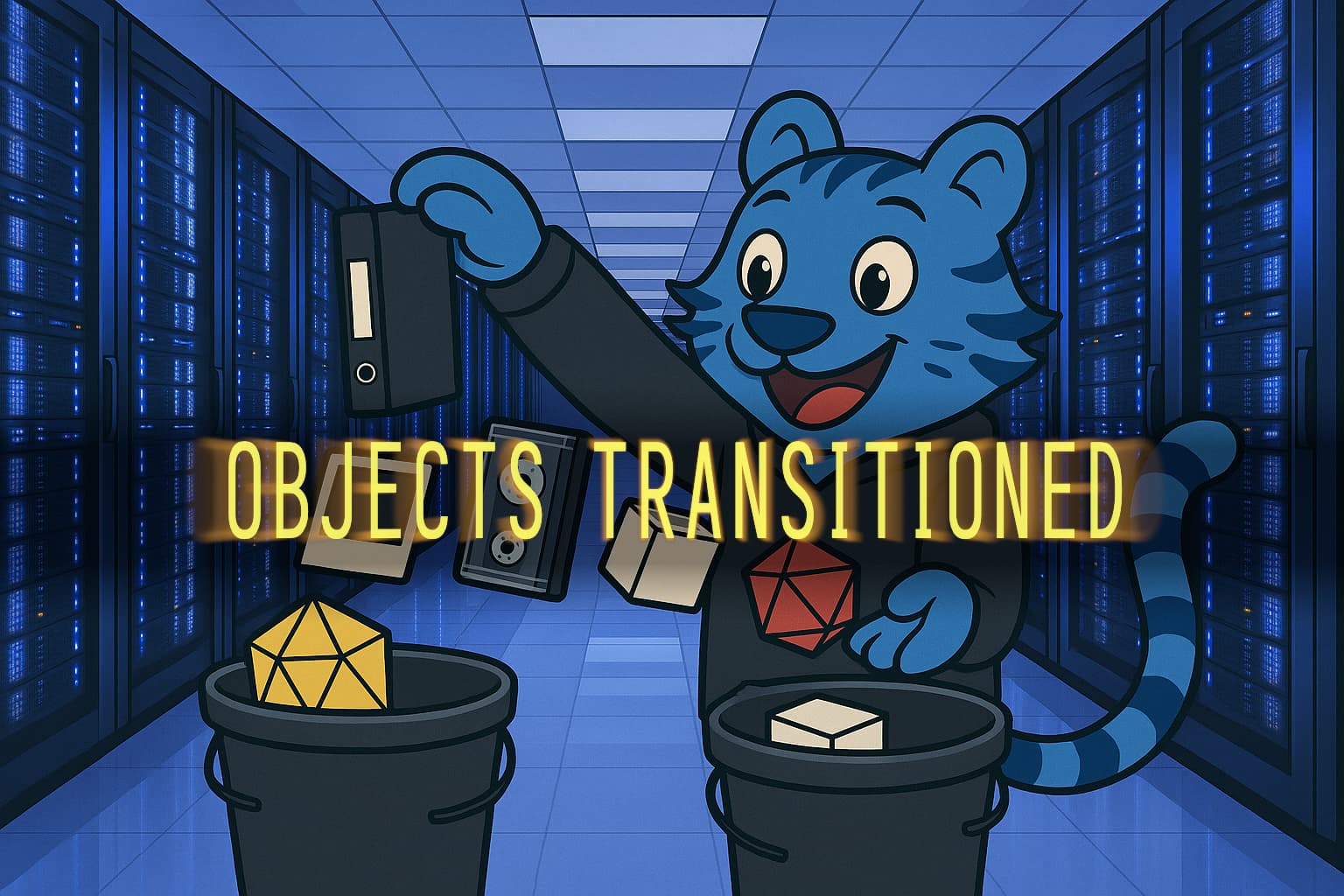
But first, a classic SRE koan:

This is the core “problem” that we face at Tigris. Object storage looks really simple from an end user standpoint but is actually quite complicated on the backend. As a user, you put an object with a key into a bucket and then you can get the data in that key back out of that bucket when you need it. On the backend we need to worry about permissions, renames, caching, and other fun things that you don't need to care about such as erasure coding.
It seems simple enough to move data between tiers, right? “Just” move the bytes around. Well, it's a bit more interesting and complicated. Buckle up, you're in for the ride now.

Lifecycle rules and you
One of the most under-appreciated features of object storage is the idea of lifecycle rules. These rules automatically move data from the standard tier to an archive or infrequent access tier, usually to save on cost. Today I'll cover two of the most common ways to use lifecycle rules I've seen in the wild: database backups and temporary caches for social media services.
Database backups
For example, let's imagine that you have a bucket full of database backups. This bucket gets new backups written to it every day, but in practice you only really need instant access to the backups made in the last week. Your backups are growing in proportion to the size of your userbase and the acronym compliance overlords demand that you delete old backups after 6 months so that you implement the right to be forgotten. How would you handle this?
Think about it as your database backups having three “stages”: fresh, archived, and eligible for cleanup:
| Stage | Age | Storage tier |
|---|---|---|
| Fresh | Less than two weeks old | Standard |
| Archived | More than two weeks old | Archive |
| Eligible for cleanup | More than three months old | Deleted |
This lets you compromise on your infrastructure costs based on the real-world uses of your data. This also comes with significant cost savings too. Imagine this realistic scenario:
- Your database starts out at 1 terabyte of data
- Your users are active enough that your database increases by 0.5% every calendar day

After three months of this daily 0.5% database growth, your bucket will be storing about 120 terabytes of data, costing you about $2,450 per month. But you don't need instant access to backups from three months ago. Those “old” backups account for the majority of your monthly cost, or about $2220 of your storage cost.
If those backups were stored at the Archive tier, they would only cost you $370 per month. In total, lifecycle rules to move data around lets you cut your storage costs to a third of what they were before:
| Before | 120 TB @ Standard | $2450 |
|---|---|---|
| After | 92 TB @ Archive, 28 TB @ Standard | $833 |
| Net savings | $1617 |
There are tradeoffs with the Archive tier, notably that you need to wait for objects to be restored, but if that's a problem you can use the Archive instant retrieval tier. This means you need to pay per gigabyte restored, but if you're in a situation where this data is needed NOW, money is replaceable.
Social media image caches
In distributed social media networks like the Fediverse, every user connects to a home server and then uses that home server to interact with the wider community. When posts are shared between home servers, they may contain attachments like photos, videos, or podcast recordings. Importantly though, these are shared as URLs to the uploaded files.
A naïve implementation of this would involve putting the image URL directly into the webpage that shows the post. This would work, but it has a side effect that you probably don't want: the origin home server for that post gets to see the IP addresses and client metadata of everyone that views that image. This is not good for user privacy.
To work around this, Mastodon has a remote media cache. When your home server gets a copy of a post with an image attached to it, the home server downloads that image and stores it in that cache.
There's a few problems with this however, the first one is that it's essentially an infinitely growing folder and the second one is that statistically nobody will be looking at remote posts that are more than a week old. In ideal circumstances, the media cache is that, a cache. If the data doesn't exist in the cache, your home server can always refetch the data and cache it again.
This situation is where lifecycle rules can help a lot. With lifecycle rules you can set a policy that has objects start out in Standard, get punted down to Infrequent Access after a week, and then deleted after a month. This will save you a lot of money as your home server sees more and more posts.
How it works
At its heart, this works off the back of our global replication strategy. Every object belongs to a region, we replicate the objects around the world as needed. Otherwise, Tigris tries to fetch data in this order:
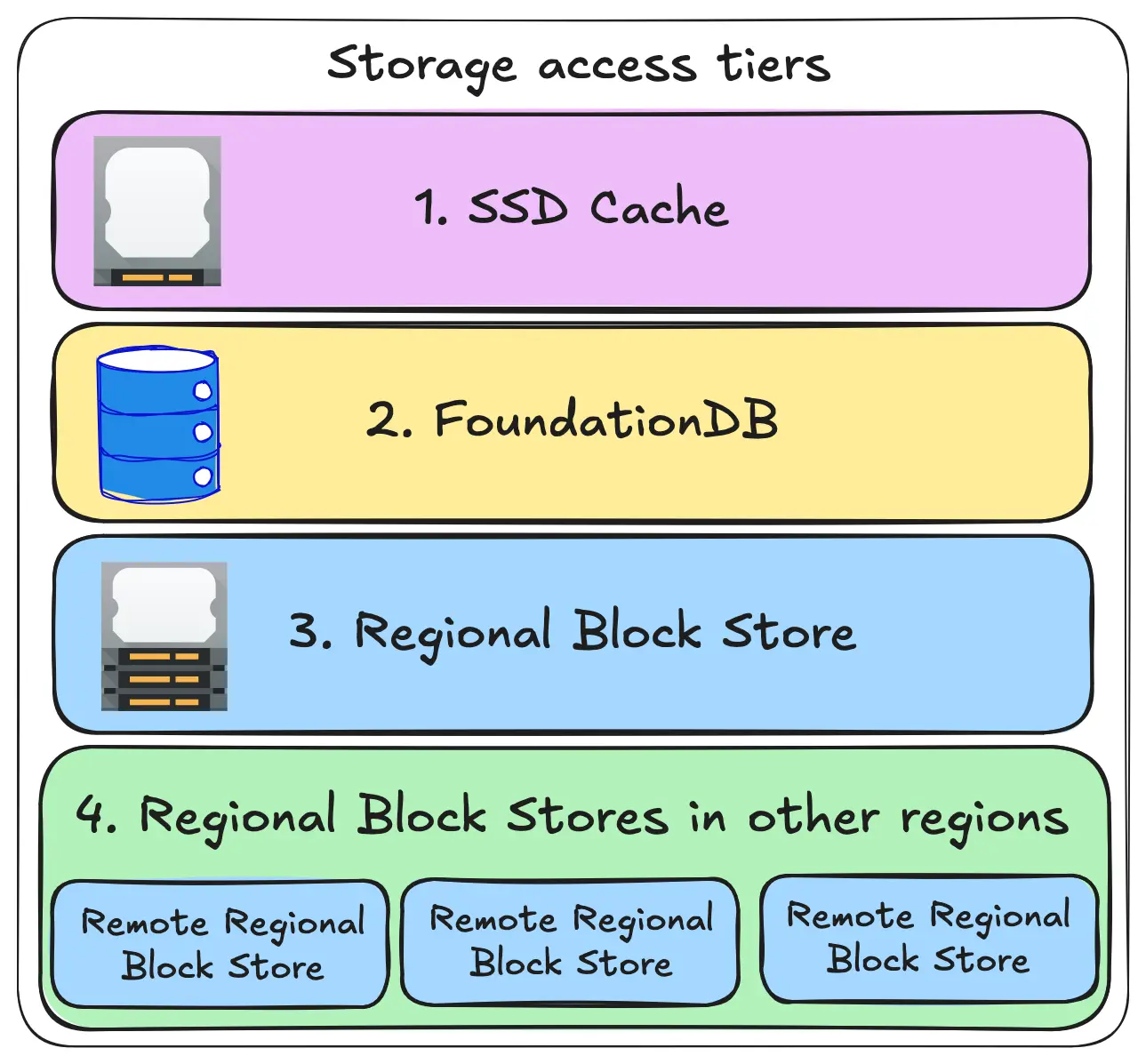
We have a background job that checks over every object in every bucket with a lifecycle policy set. Every object in those buckets is automatically added to a secondary index by their creation time, so we do our lifecycle transitions in order. When the background job determines that it's time for an object to be transitioned, it pushes the object's internal ID to a queue. Another worker picks this up and then actually goes about moving the bytes around.
From here it sounds like it'd be super easy, right? All you do is just copy and paste to the new location, update the metadata, and then you're off to the races, right?
Remember that SRE koan I shared earlier:

This was hard for us because of our global replication system. Internally each object has metadata and the key bit of metadata that we use for replication is the Last-Modified timestamp. You can see this Last-Modified timestamp if you look at the response headers from the API:
curl -s https://xe-demo-last-modified.fly.storage.tigris.dev/hello.txt --head | grep last-modified
last-modified: Tue, 29 Apr 2025 15:47:02 GMT
Semantically, this Last-Modified header has strong meaning to users. Users expect that if they modify the data in their object, it changes the Last-Modified header value. They also expect that if they DO NOT modify the data, the last-modified header value is not changed. Internally, this Last-Modified header has also been used to mean “the last time the metadata was modified” because the object metadata contains pointers to block storage.
We have a number of internal test buckets we use to keep track of Tigris' performance, and the most scary part of this change was enabling lifecycle migration rules on those buckets. Nothing went wrong, thanks to our tireless effort making sure that every aspect of this had unit and functional test coverage, but it's always scary to hit the big red button and know that you're probably about to get paged if something goes wrong.
So when an object is ready for replication, we go through a few checks to make sure all is good:
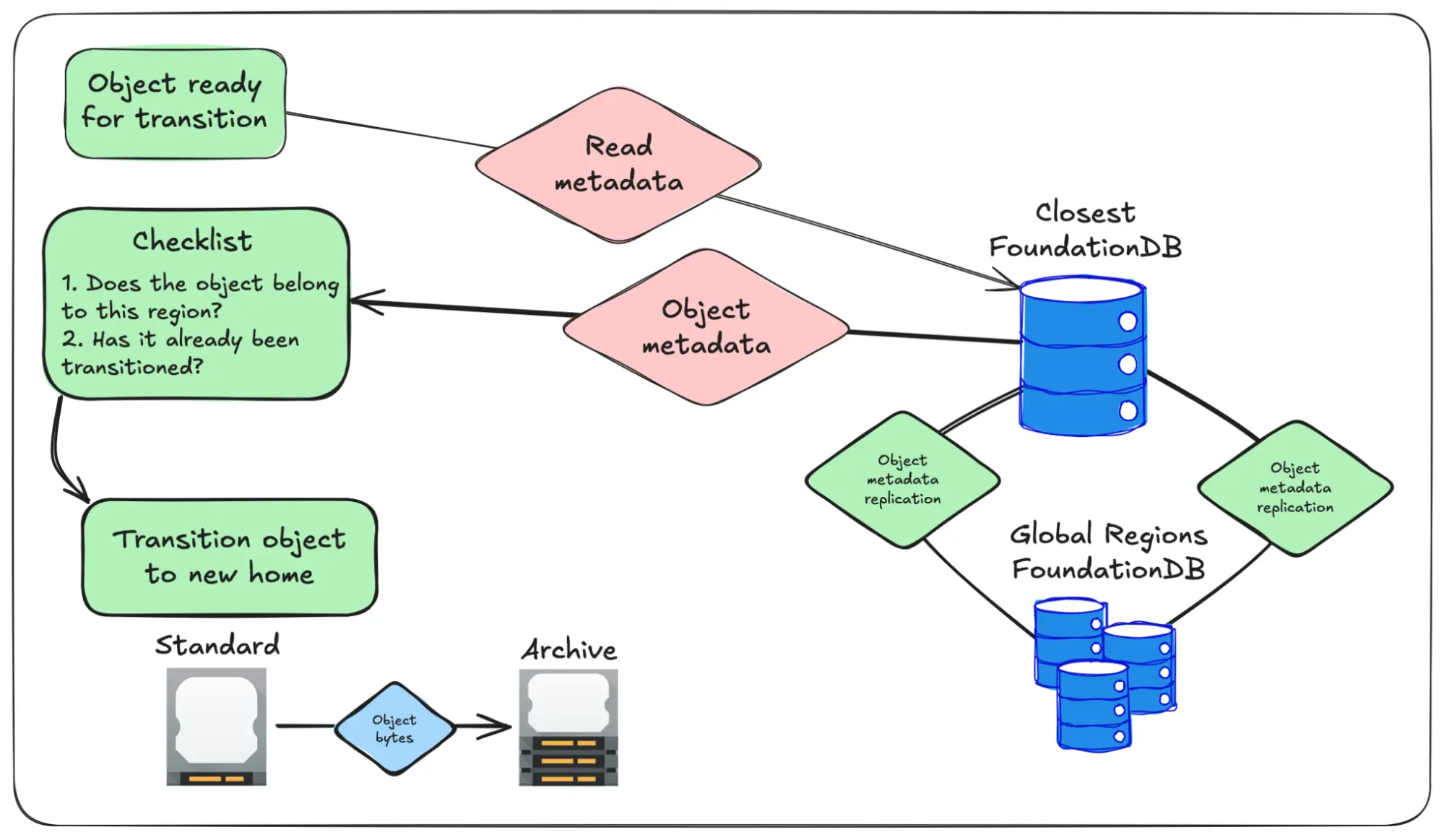
If the object belongs to the local region and hasn't been transitioned, the object bytes get moved over to their new home. Once that's done we check to make sure that the metadata hasn't been updated by another region during the move. If it has been updated, then we remove the data from its new home (making sure to leave its old home intact) and then re-enqueue the object so the system tries again later.
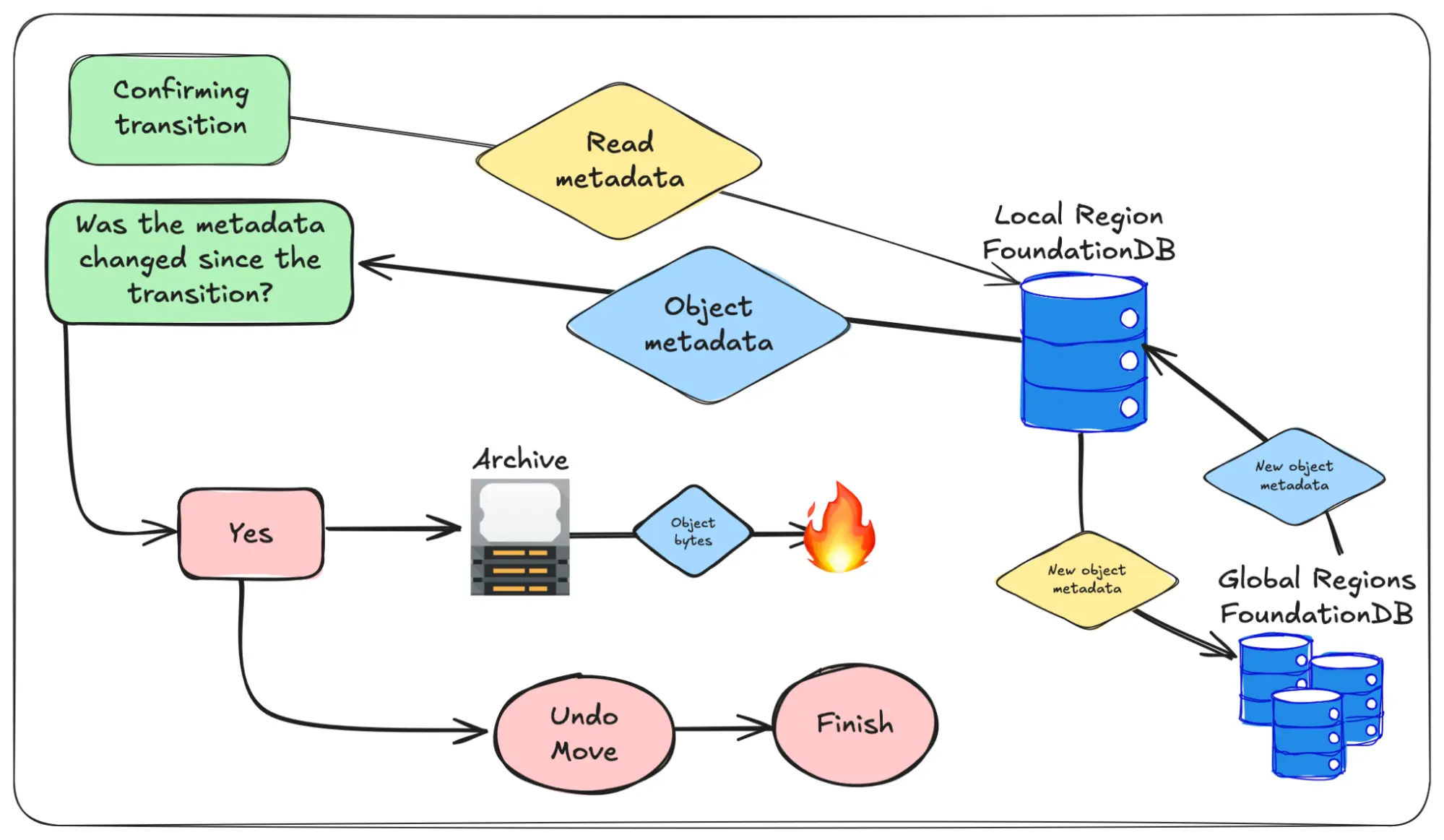
If everything goes well the object metadata replicates out and the data is deleted from its old home:
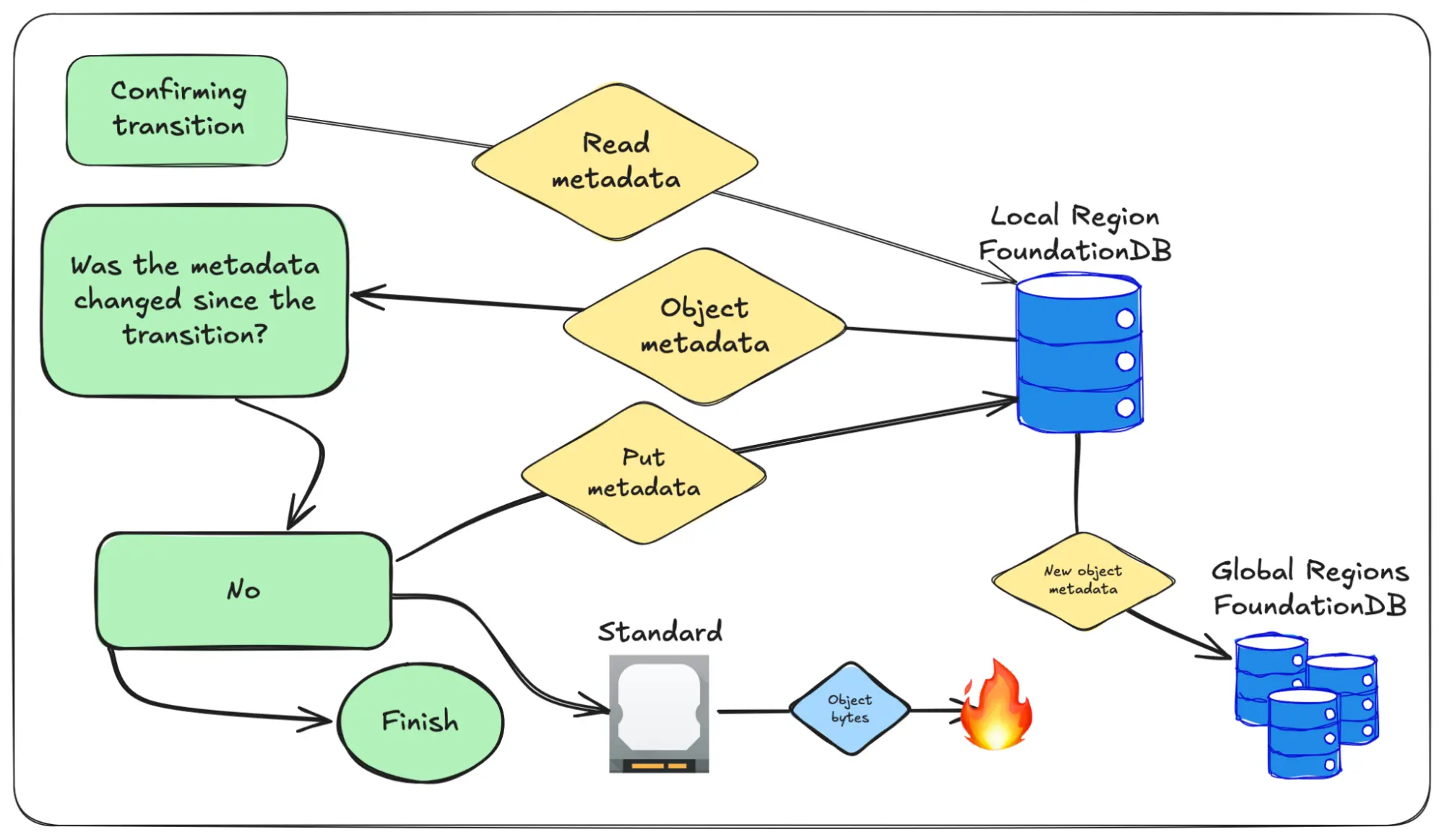
We need to do the checks in this exact order because Tigris has multiple regions without any region being super-authoritative over any other. In the worst case if we don't do it exactly like this, we could push out a stale pointer to data. That would mean other regions would fail to read objects while a lifecycle transition was running. This would be very bad, and we don't want you to have to think about this as a failure case.

How to enable this
Right now we support a single storage tier transition per bucket. You can transfer data in the following ways:
- Standard to Infrequent Access
- Standard to Archive instant retrieval
- Standard to Archive
We are working on adding multiple lifecycle tier transitions into the mix (so that you can slowly punt things down the tier list before they eventually get deleted).
To implement the policy mentioned in the database backups part of this article, you need the following lifecycle JSON document:
{
"Rules": [
{ "Expiration": { "Days": 90 }, "Status": "Enabled" },
{
"Status": "Enabled",
"Transitions": [{ "Days": 14, "StorageClass": "GLACIER" }]
}
]
}
Then enable it with the aws s3api put-bucket-lifecycle-configuration command:
aws s3api put-bucket-lifecycle-configuration \
--bucket tigris-example \
--lifecycle-configuration file://database-backups.json
If you already have data in the bucket, it'll be enqueued for transition instantly. Just wait a few minutes while you make another cup of coffee.
Conclusion
We now let you move data between tiers so that you can save money on your old backups without having to think about the details. We're surely going to make this more elaborate in the future, so keep your eyes peeled!
Set and forget object storage
Configure your rules,
let time beat ever forward;
escape storage costs.